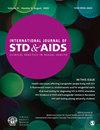在临床实践中坚持使用含双药和三药的方案。
摘要
背景:节省药物的抗逆转录病毒治疗(ART)方案在治疗HIV-1方面越来越受到关注。第二代整合酶抑制剂Dolutegravir (DTG)在这一发展中发挥了关键作用,可以在保持病毒学控制的同时使用更少的药物进行治疗。该研究旨在分析和比较德国慕尼黑HIV中心的HIV感染者(PWH)在基于dtg的两种药物方案(2DRs)和三种药物方案(3DRs)的治疗持久性。方法回顾性、观察性、纵向分析,采用电子病历。所有接受含dtg的抗逆转录病毒治疗方案的HIV-1患者均被纳入研究,包括联合利匹韦林(RPV)或拉米夫定(3TC)治疗2dr,或联合替诺福韦(TAF或TDF)和恩曲他滨(FTC),或联合阿巴卡韦(ABC)和FTC治疗3dr。排除标准包括HIV-2感染或同时使用其他抗逆转录病毒药物。主要终点是2dr和3dr之间的停药时间比较。次要终点包括停药原因分析。Kaplan-Meier估计、log-rank检验和加速失效时间(AFT)模型用于统计分析。结果共有854人被纳入研究,其中462人(54.1%)患有2DR。对于主要终点,发生了141个事件。在未经调整的分析中,与3DR组相比,2DR组的治疗持续时间明显更长(p = 0.005, log-rank检验)。两组均未达到中位持续性。在AFT模型中,在多次代入后,未调整、部分调整(性别、年龄、传播途径)和完全调整(额外调整CD4最低点和基线阻力)的模型中,接受2DR治疗的停药时间分别延长74.9%(23.0%-126.8%)、85.7%(30.5%-140.8%)和98.0%(36.7%-159.0%)。对于次要终点,发生了196个事件。发现2dr和3dr的持久性具有可比性(p = 0.190)。停药的原因包括心血管风险、未明确的副作用、胃肠道副作用、肾功能受损、体重增加、方便(改用单片方案)和其他因素。体重增加(p = 0.018)、肾功能受损(p = 0.008)、心血管风险(p = 0.004)、未明确的副作用(p = 0.003)、胃肠道副作用(p = 0.003)以及切换到单片方案(p < 0.001)在调整多重测试后仍然具有显著性。结论:本研究发现抗逆转录病毒治疗方案类型(2DR或3DR)与停药时间之间存在显著相关性。参数和非参数事件时间分析以及基线差异调整后证实,与3dr相比,基于dtg的2dr具有更长的治疗持续时间。这两种治疗方案的病毒学效果相当,与之前的研究一致。3dr停药率较高的主要驱动因素是副作用,这支持了节约药物方案可能有助于提高耐受性和降低毒性的假设。这些发现表明,药物节约方案可以提高长期治疗依从性。然而,该研究的回顾性性质和中心特异性可能限制了普遍性。需要更多真实世界的数据来证实这些结果。BackgroundDrug-sparing antiretroviral treatment (ART) regimens are gaining interest in the treatment of HIV-1. Dolutegravir (DTG), a second-generation integrase inhibitor, has been pivotal in this development, allowing treatment with fewer drugs while maintaining virologic control. This study aimed to analyze and compare treatment persistence in people with HIV (PWH) on DTG-based two-drug regimens (2DRs) and three-drug regimens (3DRs) at an HIV center in Munich, Germany.MethodsRetrospective, observational, longitudinal analysis using electronic patient records at MVZ München am Goetheplatz. All people with HIV-1 receiving DTG-containing ART regimens-combined with rilpivirine (RPV) or lamivudine (3TC) for 2DRs, or with tenofovir (TAF or TDF) and emtricitabine (FTC), or abacavir (ABC) and FTC for 3DRs-were included. Exclusion criteria included HIV-2 infection or concomitant use of other antiretroviral drugs. The primary endpoint was the comparison of time-to-discontinuation between 2DRs and 3DRs. Secondary endpoints included an analysis of reasons for discontinuation. Kaplan-Meier estimates, log-rank tests, and accelerated failure time (AFT) models were used for statistical analysis.ResultsOverall, 854 individuals were included in the study, with 462 (54.1%) on a 2DR. For the primary endpoint, 141 events occurred. In the unadjusted analysis, treatment persistence was significantly longer in the 2DR group compared to the 3DR group (p = .005, log-rank test). Median persistence was not reached in either group. In AFT models, being on a 2DR was associated with a 74.9% (23.0%-126.8%), 85.7% (30.5%-140.8%), and 98.0% (36.7%-159.0%) longer time-to-discontinuation in the unadjusted, partially adjusted (sex, age, route of transmission), and fully adjusted models (additionally adjusted for CD4 nadir and baseline resistance) after multiple imputation, respectively. For the secondary endpoint, 196 events occurred. Persistence on 2DRs and 3DRs was found to be comparable (p = .190). Reasons for discontinuation included cardiovascular risk, unspecified side effects, gastrointestinal side effects, impaired kidney function, weight gain, convenience (switch to a single-tablet regimen), and other factors. Weight gain (p = .018), impaired renal function (p = .008), cardiovascular risk (p = .004), unspecified side effects (p = .003), gastrointestinal side effects (p = .003), and switching to a single-tablet regimen (p < .001) remained significant after adjusting for multiple testing.ConclusionsThis study found significant associations between the type of antiretroviral treatment regimen (2DR or 3DR) and time-to-discontinuation. DTG-based 2DRs were associated with significantly longer treatment persistence compared to 3DRs, as confirmed in parametric and non-parametric time-to-event analyses and after adjusting for baseline differences. Virologic efficacy was comparable between the two regimens, aligning with previous studies. The main drivers of higher discontinuation rates in 3DRs were side effects, supporting the hypothesis that drug-sparing regimens might contribute to better tolerability and lower toxicity. These findings suggest that drug-sparing regimens could lead to improved long-term treatment adherence. However, the study's retrospective nature and center-specific characteristics may limit generalizability. More real-world data are warranted to confirm these results.

 求助内容:
求助内容: 应助结果提醒方式:
应助结果提醒方式:


